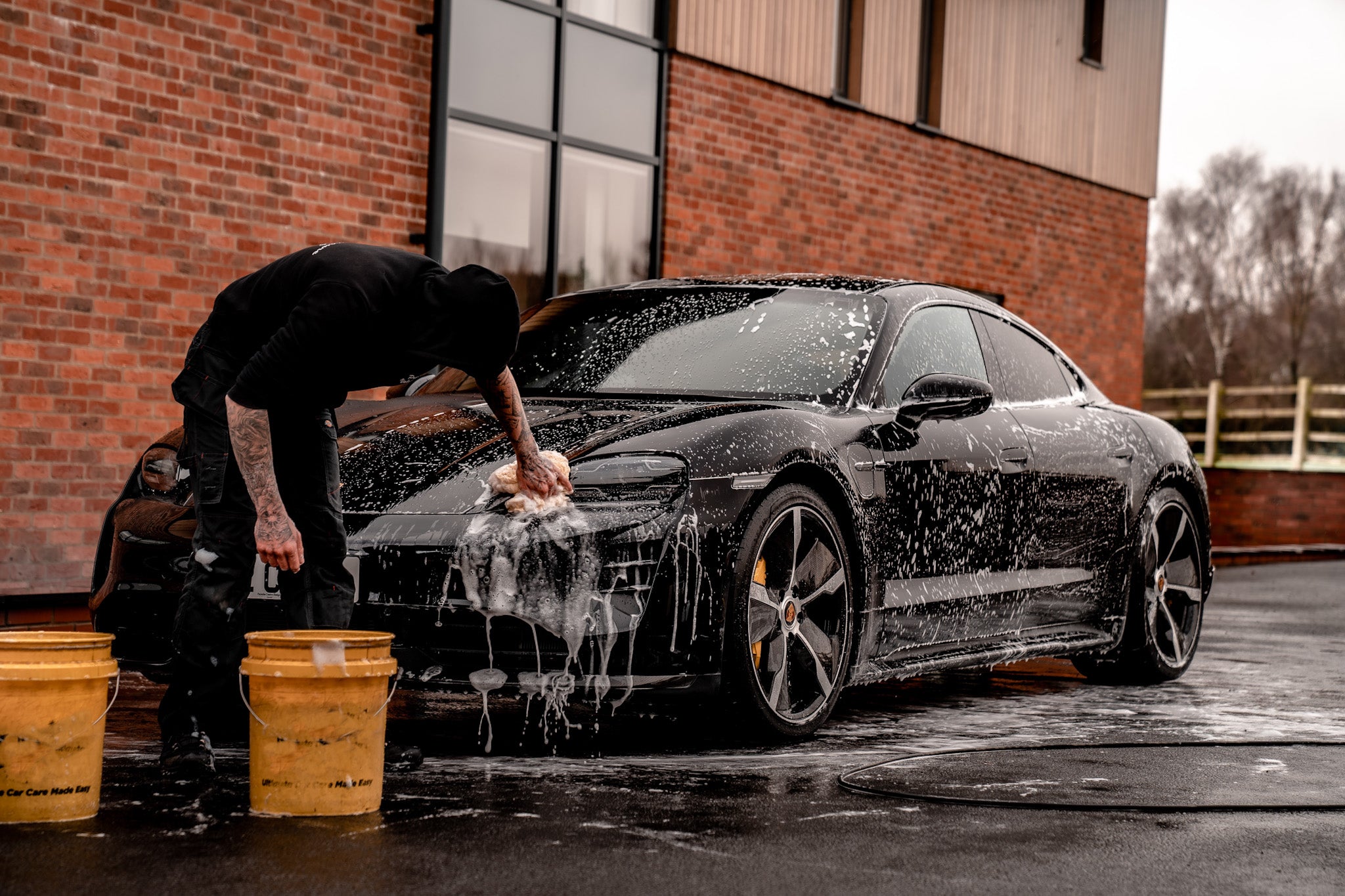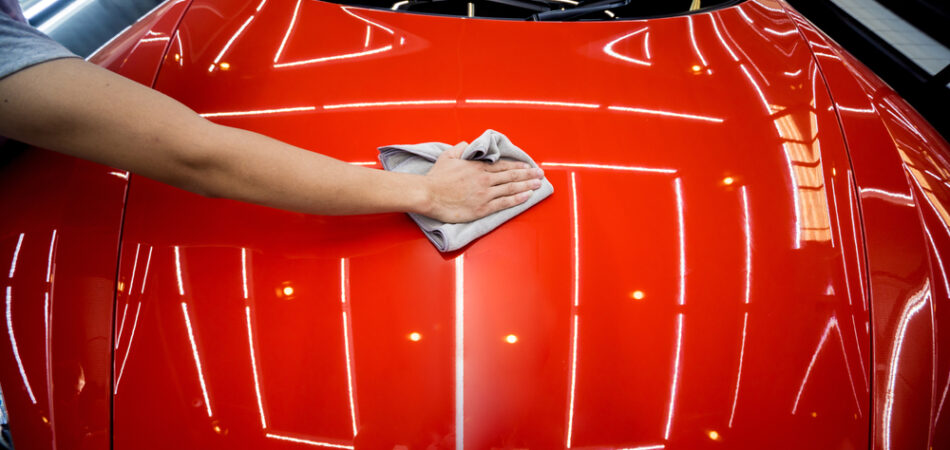Top Quality Ceramic Coatings San Jose for a Remarkable Complete
Top Quality Ceramic Coatings San Jose for a Remarkable Complete
Blog Article
Introducing the Scientific Research Behind Ceramic Coatings: Exactly How Does It Job and Why Is It Above Traditional Choices?
Ceramic finishings have actually been obtaining appeal in different markets for their remarkable efficiency and longevity. The scientific research behind these coatings goes beyond simple surface area security, delving right into the detailed chemistry that makes them stick out from conventional options (ceramic coatings san jose). Understanding just how ceramic layers job and why they outshine standard options is crucial for those looking for to boost the durability and resilience of their products. So, exactly what establishes ceramic layers apart, and how do they attain such amazing results?
The Chemistry of Ceramic Coatings
In comprehending ceramic finishes, diving into the intricate chemistry behind their make-up is crucial for comprehending their performance and durability. Ceramic layers are mostly composed of silicon dioxide (SiO2), which creates a protective and solid layer when related to different surface areas. This chemical framework supplies outstanding resistance to warm, chemicals, and deterioration, making ceramic coverings extremely searched for for a vast array of applications.
The chemistry behind ceramic layers entails the formation of covalent bonds in between silicon and oxygen atoms, developing a stiff network that improves the covering's sturdiness and durability. In addition, the presence of various other elements such as zirconium, light weight aluminum, and titanium more enhances the coating's homes, providing increased firmness and attachment to surface areas.
Recognizing the chemical structure of ceramic layers enables for the personalization of formulations to match specific requirements, whether it be for automobile, industrial, or domestic objectives. By taking advantage of the power of chemistry, ceramic layers remain to pave the means for superior defense and efficiency in numerous markets.
Advantages of Ceramic Coatings

One more significant advantage of ceramic finishes is their hydrophobic nature. This residential or commercial property triggers water to grain up and roll off the layered surface area, bring dirt and impurities with it. Therefore, ceramic coverings make cleaning and preserving surfaces much less complicated and less taxing. Ceramic coverings use improved tint and gloss depth, providing surfaces a vivid and glossy look. In general, the wide range of advantages used by ceramic finishes make them a premium alternative contrasted to standard covering techniques.
Exactly How Ceramic Coatings Bond
Ceramic finishes bond to surfaces with a process that involves molecular attachment and chemical communications. When a ceramic coating is applied to a surface area, it forms a strong bond by chemically adhering to the surface at a molecular level.
In addition, the chemical communications in between the ceramic finish and the surface better enhance the bond. ceramic coatings san jose. These interactions enable the ceramic covering to create a smooth and continual layer externally, giving superb defense and toughness. Unlike traditional coatings that might remain on the surface area without completely bonding, ceramic coatings produce a long-term bond that is resistant to chemicals, UV rays, and rough ecological problems

Essentially, the bonding system of ceramic finishings makes sure a reliable and lasting safety layer that outperforms standard coating options. This superior bond contributes to the sturdiness, scratch resistance, and longevity of ceramic finishings, making them a recommended option for different applications.
Sturdiness of Ceramic Coatings
The remarkable longevity of ceramic coverings stems from their durable molecular adhesion and chemical communications with surface areas, making sure a sturdy protective layer that goes beyond traditional finish choices. When applied, ceramic layers create a solid bond with the substratum, developing a durable barrier against numerous environmental stress factors such as UV radiation, chemicals, and abrasions. This bond is so secure that it can hold up against the roughness of daily use without weakening or deteriorating quickly.
Unlike traditional layers that may deteriorate over time, ceramic coverings preserve their stability for a prolonged duration, offering durable protection for the underlying surface area. Generally, the outstanding resilience of ceramic coatings makes them an exceptional option for protecting a vast array of surface areas in numerous applications.
Ceramic Coatings Vs. Traditional Alternatives
In contrast to traditional covering approaches, ceramic layers provide a distinct mix of sturdiness and protective abilities that set them apart in various surface area protection applications. Conventional choices such as wax or sealants provide a short-lived layer of defense that can disappear promptly, requiring frequent reapplication. On the other hand, ceramic coverings create a strong bond with the surface, developing a semi-permanent or permanent obstacle that is extremely resistant to abrasion, chemicals, UV rays, and severe temperatures.
Furthermore, ceramic coatings provide remarkable hydrophobic residential or commercial properties contrasted to typical finishes. The hydrophobic nature of ceramic coatings causes water to grain up and roll off the surface, carrying dust and pollutants with it. This self-cleaning effect helps to keep the surface's tidiness and gloss for extensive durations, decreasing the requirement for constant upkeep.
In addition, ceramic coverings have a thicker layer compared to standard choices, offering boosted scratch check my source resistance and security against minor impacts. This durability makes certain durable efficiency and assists maintain the aesthetic charm of the treated surface area for an extensive period.
Conclusion
To conclude, the science behind ceramic coatings depends on their chemical make-up and bonding properties, making them superior to conventional alternatives. The advantages of ceramic coatings consist of boosted longevity and security for surface areas. By recognizing just how ceramic finishes job and their benefits over conventional alternatives, one can make educated decisions when considering finish choices for various applications.
Unlike conventional finishings that might sit on the surface without totally bonding, ceramic layers create an irreversible bond that is immune to chemicals, UV rays, and severe environmental problems.
The exceptional longevity of ceramic coatings stems from their robust molecular attachment and chemical interactions with surfaces, guaranteeing a long lasting protective layer that goes beyond conventional coating visit this site right here options.Unlike conventional coverings that might deteriorate over time, ceramic layers maintain their honesty for an extensive period, offering long-lasting security for the underlying surface.In contrast to conventional covering methods, ceramic finishes offer an unique blend of sturdiness and protective abilities that set them apart in different surface security applications. By recognizing exactly how ceramic finishings job about his and their benefits over traditional alternatives, one can make informed decisions when taking into consideration covering alternatives for different applications.
Report this page